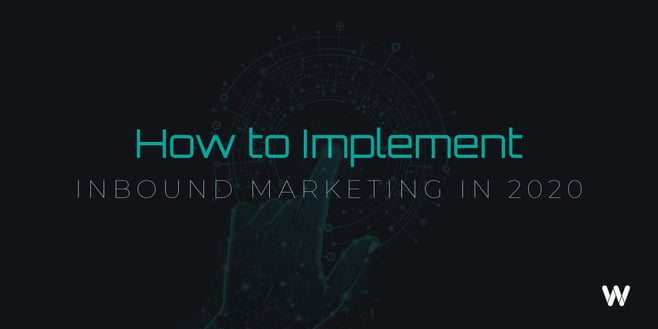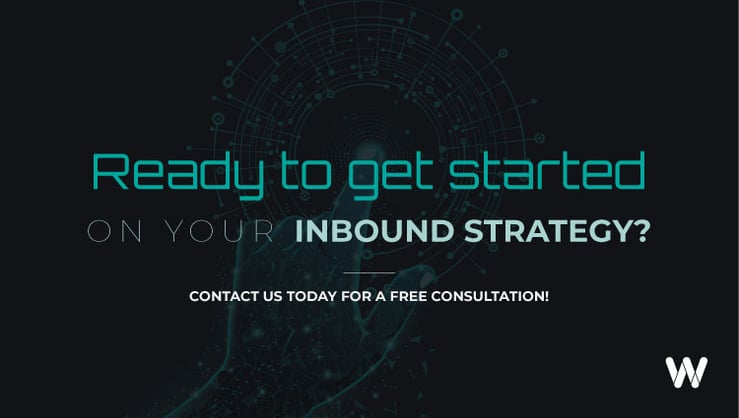
As we near the end of 2019, it’s a great time to reflect on your marketing efforts from the past year. What worked? What didn’t work? Did your business grow as you expected? When it comes to strategizing for the new year, now is the perfect time to start implementing inbound marketing into your marketing plan. If lead generation and increasing your customer base are top priorities for your business, inbound marketing is a critical strategy to your success.
But where to start? Here are some key questions to ask yourself as a means to get you thinking about your current marketing efforts and how you can begin implementing the inbound methodology.
 1. How successful is your website’s performance and content marketing strategy?
1. How successful is your website’s performance and content marketing strategy?
Having high numbers of website traffic can be great, but is everyone visiting your site engaging with your brand and converting into paying customers? You don’t want just anyone coming to your website; you want target prospects who are interested in your product or service, who then become leads, and eventually, happy customers.
The key to the inbound marketing is to focus on attracting and delighting your ideal target market. By creating useful, relevant content, you will become a valued resource for your audience and begin building a relationship before your sales team even enters the picture.
2. How well do you know your ideal customer?
List five traits your ideal customer possesses; what are they? Can you list more? The first step in creating an effective inbound marketing strategy is understanding your target audience and knowing exactly who they are. This knowledge will help drive your content strategy and provide value at every stage of the buyer’s journey.
Now that you know who you are targeting, how does this person make purchasing decisions? Are they doing research on their own? Are there others involved at certain stages of the purchasing decision? What types of information would help this person make a decision to move forward with your product or service?
Your audience holds more power than ever when it comes to purchasing decisions and that change has forever impacted the way businesses must now sell to their audiences. Creating valuable content at the right place and right time adapts to this new way of decision making and can help turn more prospects into leads into customers.
3. When do your prospects become leads?
Thinking about your new customers from this past year, at what point did they become a customer? At what point did you know that they were interested in your product or service? How long did that process take?
Inbound marketing helps you attract the right visitors to your website and qualify them as leads for your sales team. This is often a challenging phase for many companies because most have never tracked this type of information or even know the point at which prospects become qualified leads. Knowing this information is a game-changer for your sales team as it provides them with warmer leads who are steps closer to becoming a customer.
So, how can you most effectively do this?
• Email is not dead: We repeat, email is not dead. Rather than sending a blanketed statement to your entire contact list, think more strategically in order to reach your target audience. Choose relevant content that coincides with their engagement on your website and other marketing channels. By providing useful information that’s relevant to your audience’s situation, you’ll begin to build trust and move them toward a purchasing decision.
• Qualifying Prospects to Leads: With inbound marketing, prospects are nurtured according to their interests and their stage in the buyer’s journey. When a prospect moves further through the buyer’s journey, this information can then be sent to your sales team for prospect follow up prioritization. This helps your sales team by prioritizing the warm leads from any cold leads who may need additional nurturing through the buyer’s journey.
• Pipeline Management: Inbound marketing works best when it works in collaboration with sales. It is important to know what is working, which marketing efforts are bringing in the best leads, and if your sales team is successfully converting those leads into customers. Through integrated CRM software (customer relationship management), you can analyze your entire marketing and sales pipeline to identify how well marketing and sales are working together.
.png?width=599&name=hubspot-prioritize-review-sites%20(1).png) 4. After you’ve closed the deal, what do your customers have to say?
4. After you’ve closed the deal, what do your customers have to say?
Inbound marketing is all about providing a remarkable experience for your customers and continuing to delight them even after they’ve purchased to keep them and their friends coming back!
When you implement an inbound marketing strategy, an important step after closing a deal is to understand how customers feel about your brand, service and product. This knowledge will allow you to continue to enhance your inbound strategy and customer service to make improvements based on feedback directly from your customers to in turn grow more leads into customers.
Were you able to answer the questions? Or would some of the questions need a bit more time to thoroughly answer? Implementing an inbound strategy correctly to obtain the best results requires you to know some key information about your target audience and your current customers. Unlike traditional outbound marketing, inbound marketing focuses heavily on continuous relationship development that delivers at the right place and the right time.








